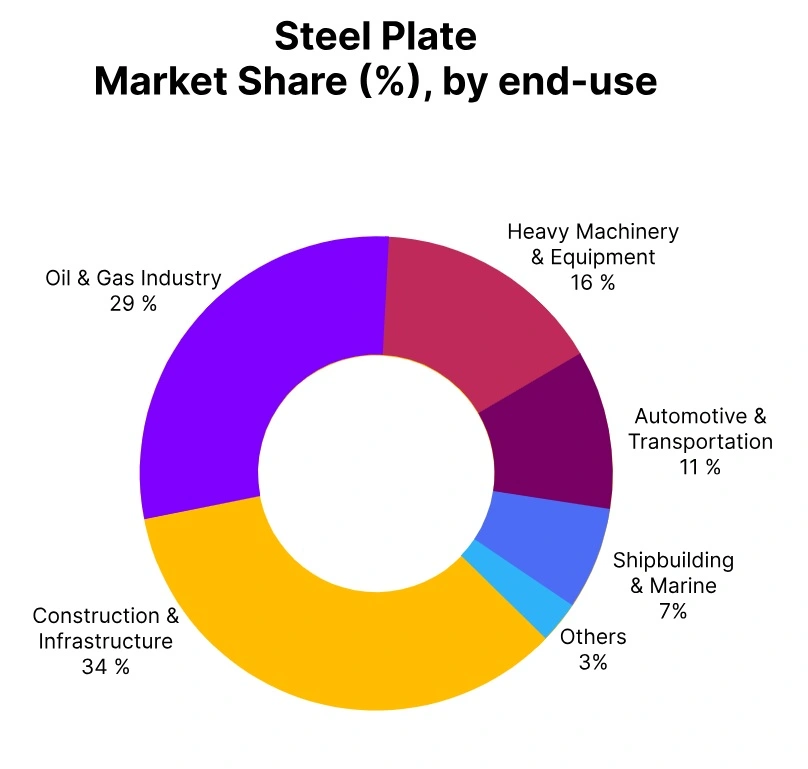Price-Watch’s most active coverage of Steel Plate price assessment:
- SS400 10mm FOB Shanghai, China
- IS2062 – 16mm Ex-Mumbai, India
- SAE 1008 1.0mm Ex Alabama, USA
- DC01 1.00mm FD Sheffield, United Kingdom
Steel Plate Price Trend Q3 2025
The Steel Plate market experienced an overall decline globally in Q3 2025 across most regions due to weak demand from industrial and construction sectors, competitive offers for imported products, and higher availability. There have been no large fluctuations in raw material costs during the quarter, which stabilized purchasing but didn’t provide an incentive for price increases.
The overhang of buyers remained risk averse in an uncertain trading environment and did not procure products above their normal inventories in a soft marked environment. Most regions saw a slight decline in Steel Plate price trend in September as demand has not clearly demonstrated an improvement. Overall, sentiment remained soft for many leading into Q4 with the supply-demand balance favoring buyers.
United States
Steel Plate Domestic Prices Del Alabama, USA, Grade- SAE 1008 1.0mm.
The Steel Plate price trend in the USA decreased by 1.55% in Q3 2025, primarily due to softer demand from key segments such as energy, construction, and manufacturing. Plants operated with high inventory levels, which reduced immediate procurement needs. Imports from lower cost producing nations also pressured domestic pricing throughout the quarter. Input cost relief from raw materials contributed to the gradual softening in prices.
End-users adopted conservative buying behavior amid uncertainty in project pipelines. Steel Plate price trend in the USA fell by 1.3% in September 2025, as procurement activity stayed slow, with buyers choosing to manage inventory exposure rather than commit to long-term supply.
United Kingdom
Steel Plate Domestic Prices FD Sheffield, UK, Grade- DC01 1.00mm.
The Steel Plate price trend in the UK fell by 1.83% in Q3 2025, as slow offtake from construction and heavy engineering projects weighed on market sentiment. Increased availability of competitively priced imports from other European producers further pressured domestic mills, who struggled with high operating expenses. Export opportunities remained limited due to weak overseas demand and currency fluctuations impacting competitiveness.
Steel Plate Price adjustments were necessary to stimulate sales in an otherwise static consumption environment. Buyer interest stayed low, with procurement focused only on immediate needs. Steel Plate price trend in the UK declined by 0.4% in September 2025, as the market continued to show minimal improvement and cautious stocking patterns persisted.
China
Steel Plate Export Prices FOB Shanghai, China, Grade- SS400 10mm.
The Steel Plate price trend in China showed a decline of 1.46% in Q3 2025, as demand continued to weaken from downstream sectors (construction, shipbuilding, and heavy machinery) from Q2. Mills kept to a steady production pace, leading to oversupply in the domestic market. There has been a slowdown in export orders, reflective of competition from other Asian producers and general weakness in world steel demand. Although raw material prices remained stable, the lack of solid consumption did not provide upward price momentum.
Traders and distributors proceeded with caution on buying, resulting in subdued overall activity. The Steel Plate prices sector in China declined from the previous month by 1.1% in September 2025, in reflection of a seasonal demand retreat and reduced procurement in preparation for a potential slow Q4.
India
Steel Plate Domestic Prices EX-Mumbai, India, Grade- IS2062 – 16mm.
According to Price-Watch, the Steel Plate price trend in India dropped by 2.32% in Q3 2025, reflecting the slowdown in infrastructure, engineering, and fabrication projects that reduced buying activity from key consumers. Imports from competitive Asian producers added further pricing pressure, compelling local mills to lower offers to maintain sales. Despite stable raw material costs, domestic demand remained muted, limiting any potential recovery.
Export demand also showed no signs of improvement, adding to the bearish tone in the market. Buyers largely avoided large-scale procurement, anticipating more price corrections ahead. Steel Plate price trend in India contracted by 0.4% in September 2025, as sentiment stayed cautious with only minimal restocking seen in the marketplace.


